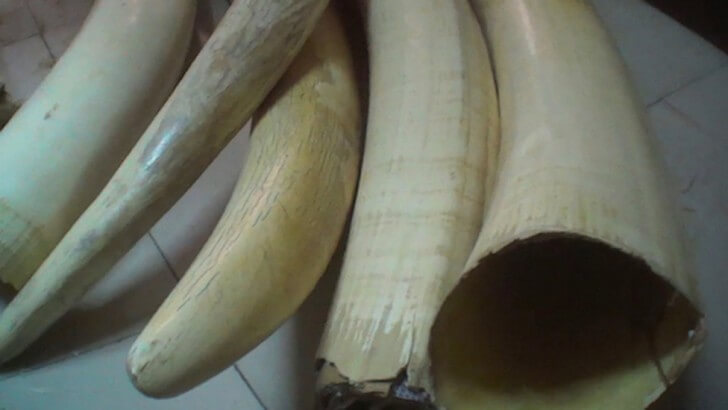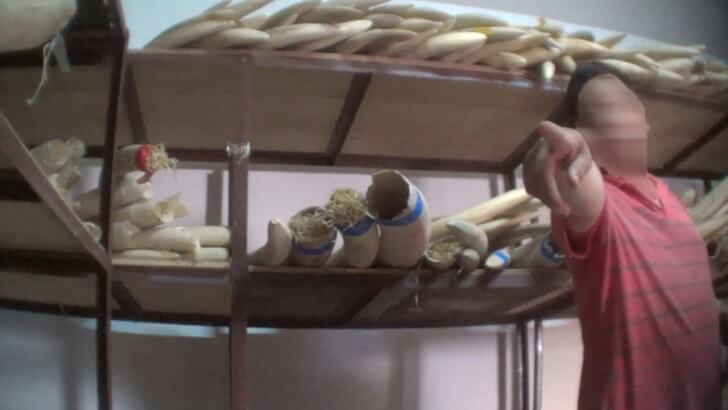BBC Earth newsletter
BBC Earth delivered direct to your inbox
Sign up to receive news, updates and exclusives from BBC Earth and related content from BBC Studios by email.
Mammals
Technology is turning the tables on poachers.
2.56am. A text message. As he squinted to read it, Dave Morgan realised his elephants were in trouble.

Researchers had heard automatic gunfire followed by two lone gunshots near their camp, in the Republic of the Congo’s Nouabale-Ndoki National Park and sent the alert. Morgan was nearly 7,000 miles away in Chicago, but that wouldn’t stop him assisting an operation to track down the poachers before they got away.
In the next few minutes, he told the researchers he would contact the park. He was soon on a Skype call with the technician in charge of anti-poaching communications.
Over the next few days, Morgan would help coordinate teams that went looking for the poachers. Before long, they found them. The poachers refused to surrender and instead fired at the park rangers. After backup arrived, however, the poachers fled – leaving lots of equipment, and 70kg of ivory, behind.
“They dropped all the things they had – which included the ivory which is very heavy to carry around,” says Morgan.
They also dropped identification, which helped lead to the subsequent arrest of three gang members. But there was more.
“They had weighing scales with them, enough medication for weeks if not longer out in the forest – they were planning on doing some heavy hunting for some time,” adds Morgan.
“We had never seen teams out in the forest carrying scales with them.”
It was a worrying indication of just how well-funded and capable the poachers were. They clearly expected to kill a lot of elephants.
It’s a problem that seems never to go away. The demand for ivory continues to drive poaching in Africa and Asia. In fact, a 2014 study found that the Central African elephant population declined by 64% in just one decade. And now elephants are increasingly being hunted for their skin, which is used to make a range of 'luxury' products including golf bags and wallets.

Despite the demand, there are those working hard to frustrate the supply. Morgan is a Research Fellow at the Lester E Fisher Center for the Study and Conservation of Apes, Lincoln Park Zoo and has studied elephants in Central Africa for many years now. Even though he is practically on the other side of the world, he continues to help monitor activity in Nouabale-Ndoki National Park. There are five study zones, comprising about 425 sq km, which his research teams frequently survey.
Their findings – documenting elephant trails or signs of poachers – are logged via GPS so that Morgan and his colleagues can keep an eye on things from far away.
“This is a wonderful forest where you have large, magnificent elephant trails,” he says. “It’s a healthy ecosystem, it’s an intact forest landscape.”
However, logging operations have come closer and closer to the protected areas over the years, which Morgan thinks may have made it easier for poachers to access the park.
Elsewhere in Africa, groups like the World Wide Fund for Nature (WWF) have been using technology to watch for poachers – even in the depths of night. Since deploying thermal camera systems in Kenya in 2016, the WWF says more than 100 poachers have been arrested.
And while the anti-poaching effort may be well resourced, so are the poachers. Morgan says the fact that the gang was so well-supplied is a tell-tale sign: “Somebody far off most likely was really supporting this.”
For some conservators, that is the real problem. Andrea Crosta is executive director and co-founder of Elephant Action League (EAL). He says that tackling poachers alone is not enough.
“You can jail 10, you can kill five, you don’t change the problem,” he says. “The main problem is the traffickers.”
You can jail 10, you can kill five, you don’t change the problem... The main problem is the traffickers”

These are the people who organise the transport of wildlife contraband, like ivory, rhino horn or pangolin scales, from countries of origin to countries of demand. They also often set up the sale of such items to buyers.
Crosta works with teams around the world to find out who the traffickers are and to whom they are connected. His colleagues often have to do this work undercover.
“Often they pretend to be buyers, but it takes a lot of work because it takes months to get trust of these people,” he explains. But the results, if successful, lead to precious intelligence on the illegal wildlife trade: “They take you places, they introduce you to their family, they tell you everything, basically.”
A wanted alleged trafficker was arrested in Thailand in December, partly thanks to months of work by EAL teams. Among other things, the alleged trafficker’s network had been involved in ivory smuggling. But the work to gather intelligence on people like this is often very dangerous. In some countries, EAL operatives work without the knowledge of state authorities, because there is a risk that someone in government may be corrupt and inclined to pass such information on to criminal gangs involved in poaching and trafficking.

But Crosta is convinced the effort and risks taken are worth it. “Every time you jail one of them, it’s a big blow for the whole supply chain,” he says.
Importantly, China recently banned its domestic legal ivory trade – a landmark policy shift that has caused a drop in ivory prices. Crosta and Morgan are both watching to see if this results in fewer poaching incidents. While there’s hope that this will be the case, there’s not much indication of that yet.
“If there’s a demand for it,” says Morgan, “people are willing to risk their lives.”
Featured image by Cultura Exclusive | Philip Lee Harvey | Getty Images